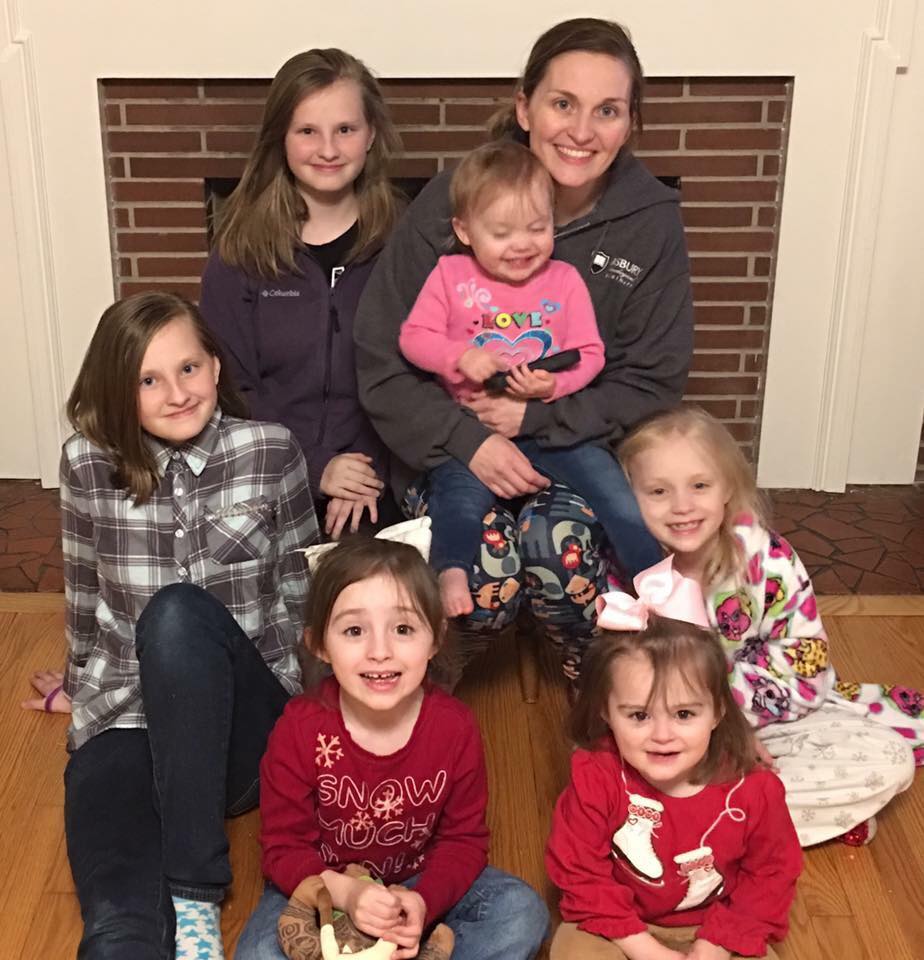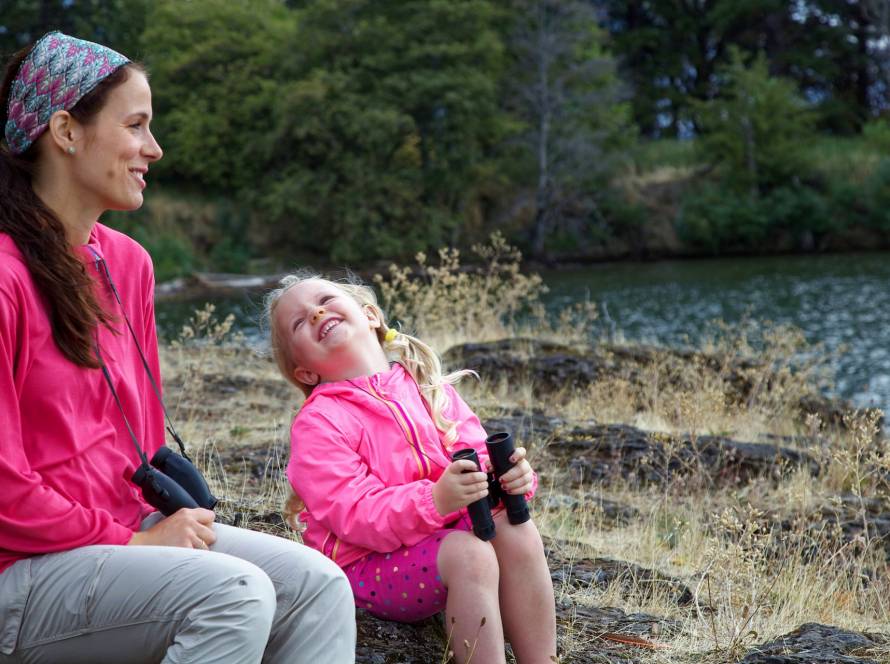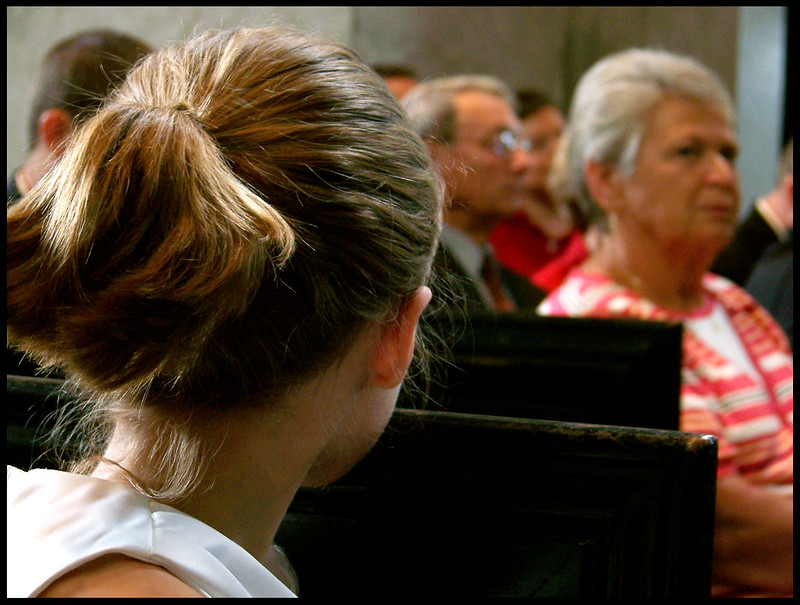When my friend Mary asked me if I would consider sharing her article about her experience with inclusive worship, I didn’t think twice – absolutely I would! In this guest post, Mary shares tells us her story, inviting us to catch a glimpse into how life and ministry changes when you find your child in need of more inclusive environments.
As you read, take time to consider how perhaps your church and your home could be places where all children and all families find a place to belong. Thank you, Mary, for sharing your heart with all of us!
“So what does this mean?”
That’s the only question I could muster when a team of pediatric specialists told me that my 3 year old daughter had what they were sure was something called “Sensory Processing Disorder.” At the time, a myriad of thoughts flooded my brain. I recalled all the fears, tantrums, and meltdowns that had basically controlled the flow of our family for the last 18 months. There were so many “couldn’ts” on our list of activities.
We couldn’t go to the beach because the waves and sand terrified Gabbie. What is more, people often take their dogs to the beach and Gabbie panicked when a canine of any size came into her purview.
We had to avoid public restrooms with automatic flushers and those horrible hand dryers that blow your skin off because someone thought it was wise to power them with jet engines.
Amusement parks were a nightmare because lines, heat, and crowds were so overwhelming.
But of all the “couldn’ts” the hardest one on the list was Sunday worship.
We couldn’t take Gabbie to worship with us because she had a hard time sitting still, never cared for small talk with strangers, and she desperately wanted to be on my hip as I ministered. Of course there were times when Gabbie had to stay with us during worship, and I am forever thankful for the parishioners who offered grace and understanding when this occurred. Nevertheless, I worried constantly.
Truth be told, stress had taken its toll on me, my husband, on Gabbie, and our other five children. It seemed we all had to take turns being the most adequate coper (a word I made up that essentially means: the person who can best deal), so that the rest of us could empty those feelings of frustration, sadness, anger, and fear. Sometimes it felt like the eight of us against the world as we protected Gabbie from critical words and negative body language from those who did not live within the confines of our four walls.
All of these experiences washed over me as the doctor responded, “You have an exceptional child. Gabbie is highly intelligent, perceptive, and her brain takes in an incredible amount of information at a very fast pace. She will likely need some occupational therapy to learn to cope and how to slow down her processing. This will be hard, but the result will be good and well worth the effort.”
Ever the researcher, I took the information, asked for all the handouts, and went immediately to Barnes and Noble to purchase all the books they had on Sensory Processing Disorder.
As I devoured one book after another, I read characteristics that described my child perfectly. I also read staggering statistics that showed how the rate of children with special needs has increased drastically in the last 20 years. According to one U.S. Census study, 54.5 million Americans (about 1 in 5), have some form of a disability or special need. Statistics also tell us that nearly 15% of children ages 3-17 have some sort of developmental disability.[1]
Those numbers were sobering and assuring all at once.
Gabbie wasn’t alone.
And we weren’t alone. It was nice to know that there were people out there on this journey with us—parents and families all just trying to do what was best. But then the Holy Spirit hit me in my gut and I thought, “Where are all of these children in the Church? 15% is a big number.” I thought about how many “special needs” kids I had seen in worship over my 30 years as a church goer and honestly, I counted them on one hand. So so a mom of a newly diagnosed, “special needs” child I felt a fair amount of indignation and shame upon this personal discovery. As a pastor, I was broken.
I was felt this jumbled mix of emotions because the two roles I live into as mom and minister often intersect. As I sat there with my stack of books, articles, and all the wisdom that Google offered, I wondered how I missed “it.” The “it” being the reality that my daughter has a need that cannot be reduced to a “phase” or an “idiosyncrasy” of which she would eventually outgrow.
Just as I began to sink into the perpetual pit of mother guilt, I became very aware of the presence of God and memories of things past came to mind. Specifically, I recalled a time when I was dropping Gabbie off at preschool at another United Methodist Church in our district. I was in a hurry that morning but Gabbie insisted we go through the sanctuary instead of cutting around the building. “Mommy, I have to see my church. I love my church. They love me here.” I couldn’t resist that plea but I was curious as to why Gabbie called the church that housed her preschool, “her church.” When we entered the sanctuary I inquired and she responded enthusiastically.
“Look! There’s beautiful blue and white things! And the baby Jesus will be born and put right here!” (The sanctuary had been carefully adorned for the season of Advent). I watched my daughter show me “her church,” a place where she was free to look, touch, feel, and tell the story of Jesus without boundaries. A place where someone with an incredible gift with art and design took the time to beautify and bring the scriptures to life with color, fabric, and texture.
It didn’t make sense to me then, but when we got her diagnosis a few months later it hit me as I walked through that same sanctuary after dropping the kids off for school. I looked around and breathed in all that Eastertide had inspired the artist to create in vibrant colors, branches, and butterflies.
For the first time, I understood why this was Gabbie’s church.
This church was truly a sanctuary for her to be herself. Here, Gabbie was free to
run to the feet of Jesus as described in the Gospels (Matthew 19:14; Mark 10:13-16; Luke 18:16-17). Here, is where she could go to Jesus without being scolded for her loud and excited volume.
Here, is where she could witness, touch, and experience God’s creation without inhibition.
The mother in me felt a wave of mercy and grace wash over my worn and weary soul, and I sat in the front pew of that church and wept heavily for what felt like hours.
When I got up and left that day, I left with a new perspective. As a mother, I was free from the fake guilt and shame that the enemy tried to hurl on my life. As a minister however, I was forced to consider the 15% of children who need to have a church where they can really worship as part of the Body. Where they can be active participants no matter their age or ability. Where they can be included and understood rather than segregated and shushed. Where people with incredible and unique gifts can offer themselves to the worship service in such a way that their efforts are not belittled or deemed a frivolity.
Walking through “Gabbie’s church” with an open heart and mind allowed me to see that it is possible to be completely inclusive of individuals and families with special needs. It also convicted me on this: we in the Church MUST strive to do better for these precious souls. The truth is they are exceptional human beings who have a lot to teach us if we will listen. While this will require time, education, and energy, I believe that by the power and presence of the Holy Spirit the Church will be greatly blessed by such effort.
Guest Blogger Bio: My sweet friend, Mary Trent, is a minister in the United Methodist Church, mother to six beautiful girls including Gabbie, and a gifted writer. She holds an MDiv from Asbury Theological Seminary where we met had the chance to live together for three years in seminary housing. So you can add to that list, a great friend and neighbor.
For more information about
- Kids in Worship
- Determining which Type of Family Ministry model works best for your church
- Discipleship in Intergenerational community
- Encouraging the continued conversation through Practical Discipleship at Home
- Seminars, Workshops, Coaching
Check out to ReFocus Ministry or “like” our Facebook page. Join our conversation at theReFocus Family and Intergen Ministry group on Facebook.
About this Blog

Refocus Ministry was started by Christina Embree, wife to Pastor Luke, mom to three wonderful kids, and church planter at Plowshares BIC. With years of experience in family ministry and children’s ministry, she is passionate about seeing churches partnering with families to encourage faith formation at home and equipping parents to disciple their kids in the faith. She recently graduated with a Masters of Arts in Ministry focusing on Family, Youth and Children’s Ministry at Wesley Seminary, she also blogs at www.refocusministry.org and is a contributing blogger at D6 Family and Seedbed




1 Comment
Desiree
It is with pleasure I know Mary, her husband, and her children. I could see how hard the struggle was for Mary and her family of Gsbbie’s diagnosis. So for her to see into “Gabbie’s Church” and see the beauty of it is wonderful. I work with children who have sensory issues and other issues and appreciate Mary’s sharing her story. I think we need to have a church where children with disabilities or not can be free to have a church like Gabbie has. Children during Jesus’ time were probably in a field or side of a mountain, at the beach shore, they could hear Jesus, maybe they came up to be held, or just go by and touch him, his clothes. Maybe Jesus said hi, or smiled at them. I’m sure they were welcomed to Jesus. Scripture proves this in Mark 10:14a , “Let the little children come to me, and do not hinder them”. I feel Mary was correct, we need to LISTEN to the children, let them be children and enjoy their “church”.